Key takeaways
- Cleveland family lifestyle emphasizes community, shared experiences, and a balance between urban and outdoor activities.
- The Cleveland History Center effectively engages families with interactive exhibits and programs that foster curiosity and bonding.
- Accessibility and family-friendly facilities enhance the overall experience, making visits enjoyable and stress-free.
- Personal connections to history are created through shared discoveries and discussions, enriching family outings at the center.
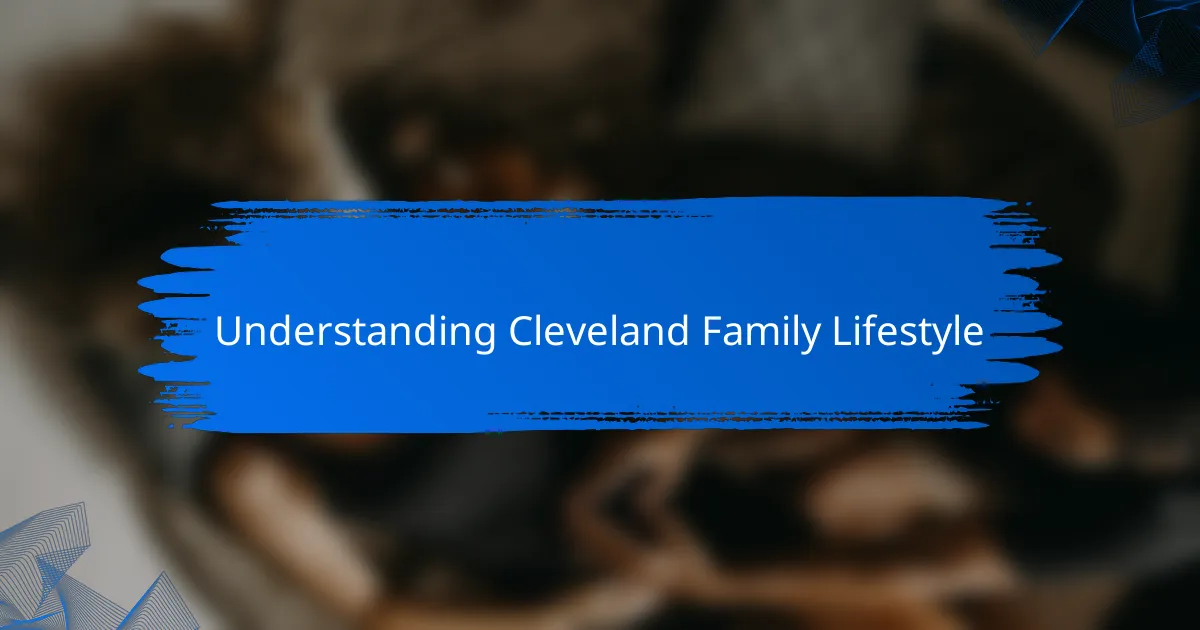
Understanding Cleveland family lifestyle
Cleveland family lifestyle is deeply rooted in strong community values and a love for shared experiences. From my own visits to local parks and neighborhood events, I’ve seen how families here prioritize time together, whether it’s through sports, cultural festivals, or simply enjoying a meal at a nearby eatery. Don’t you think that sense of belonging makes everyday life feel richer?
What strikes me most is the balance Clevelanders maintain between city life and outdoor activities. Families often embrace the nearby lakefront or nature trails as much as local museums and art centers. This mix of urban excitement with accessible green spaces reflects a lifestyle that encourages both learning and relaxation.
Have you noticed how traditions play a key role in Cleveland family routines? In my experience, it’s common for multiple generations to come together for holidays, storytelling, and passing down recipes. These moments create a powerful sense of continuity and identity that reminds me how important family really is in this city.
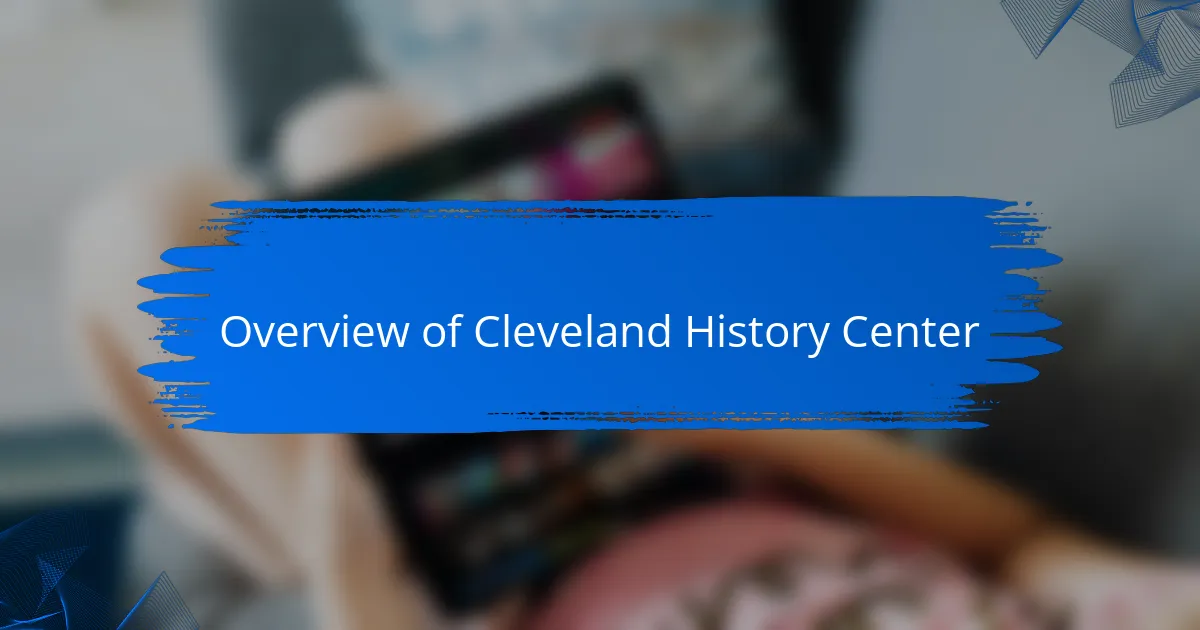
Overview of Cleveland History Center
The Cleveland History Center impressed me as a place where the past feels alive and inviting. Walking through its exhibits, I could sense how thoughtfully the museum captures the stories of Cleveland’s people and neighborhoods. Have you ever walked into a place that makes history feel personal? This center does exactly that by connecting families to the city’s rich heritage in ways that spark curiosity and pride.
What I found remarkable is the variety of displays—from artifacts that tell everyday family stories to larger exhibits on industrial growth. It reminded me how Cleveland’s history mirrors the experiences of many families, including my own, who have roots tied deeply to hard work and community bonds. This made me appreciate how history isn’t just dates and facts—it’s about the lives we share and remember together.
Visiting the center felt like stepping into a time capsule without leaving the present. I especially enjoyed how the space invites families to explore side-by-side, generating conversations across generations. Isn’t it powerful when a museum becomes a place where parents and kids can discover their city’s story together? That kind of shared discovery stays with you long after you leave.
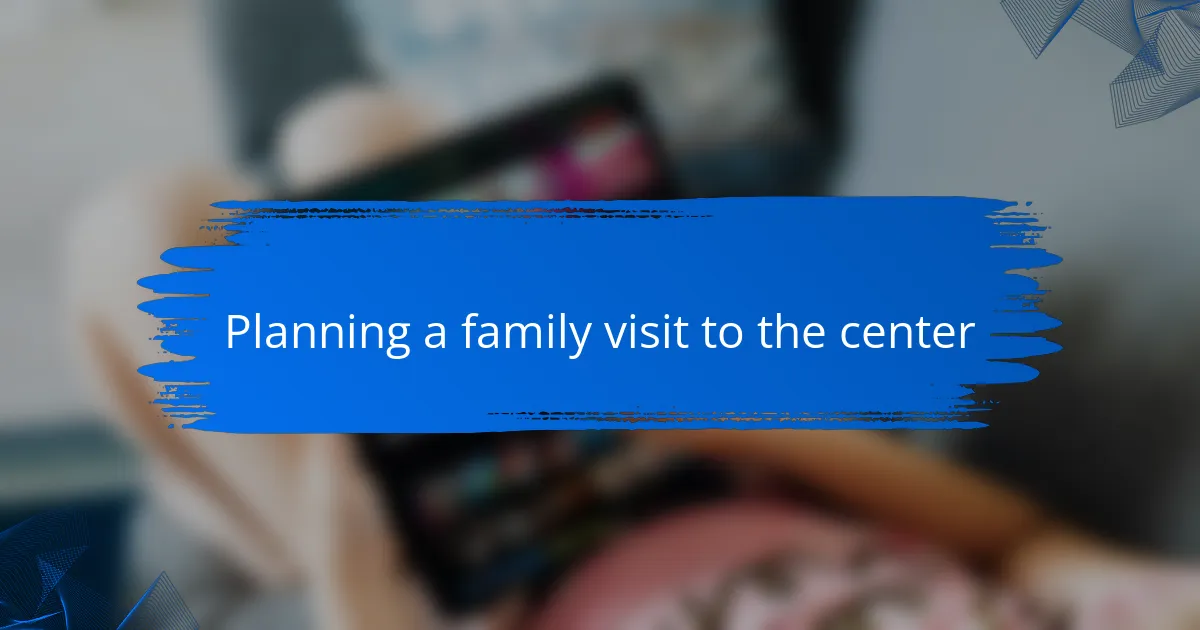
Planning a family visit to the center
When planning a family visit to the Cleveland History Center, I always make sure to check the center’s schedule ahead of time. They often have special programs and interactive exhibits designed specifically for children, which really brought my own kids’ excitement to a new level. Don’t you find that planning around these events can turn an ordinary outing into a memorable family adventure?
I also think about timing—visiting on a weekday or earlier in the day usually means fewer crowds, making it easier to move at my own family’s pace. From my experience, giving the kids plenty of breaks to ask questions or explore hands-on displays keeps everyone engaged and prevents that usual museum fatigue.
Finally, I can’t recommend enough packing some snacks and water, especially if you have younger children. Trust me, having little comforts on hand keeps the mood light and the focus on fun learning rather than growing cranky tummies. Have you noticed how these small details often make or break a family day out?
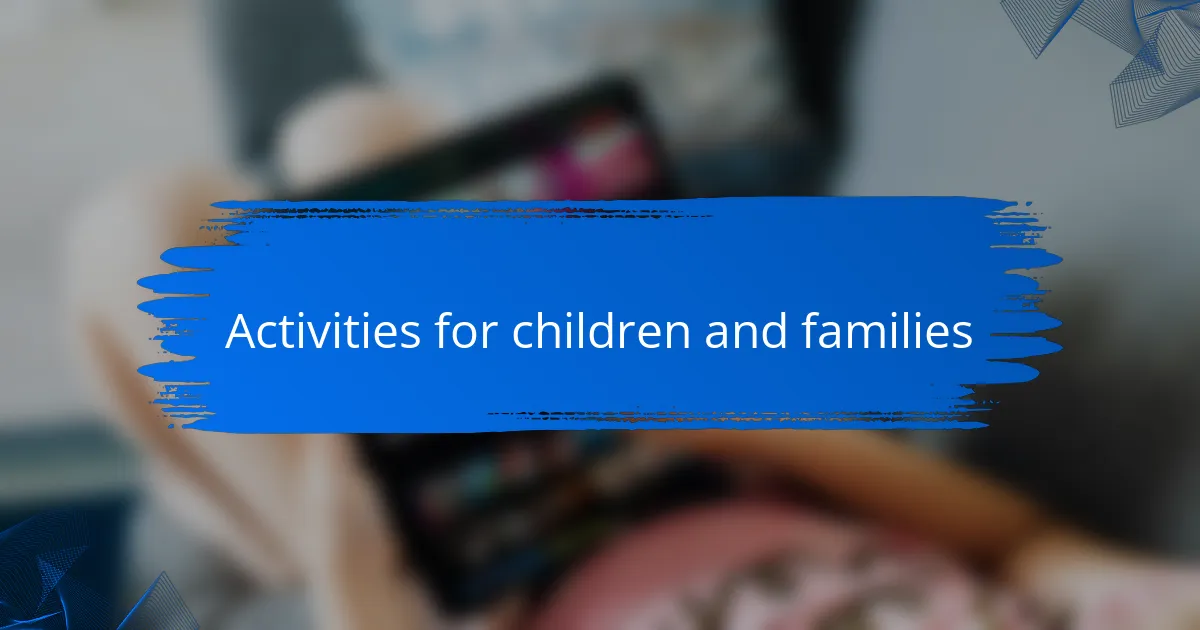
Activities for children and families
What I love about the Cleveland History Center is how it makes activities for children feel more like play than learning. My kids were thrilled by the interactive exhibits where they could touch, build, and discover—there’s something magical about seeing their faces light up when history becomes hands-on. Have you ever noticed how a child’s curiosity turns a museum visit into an unforgettable adventure?
The center also offers storytelling sessions and family workshops that create wonderful moments for bonding. I remember one afternoon when my daughter eagerly participated in a craft project inspired by Cleveland’s early settlers, and we ended up chatting about our own family stories on the way home. Those experiences show me how the center doesn’t just teach history—it connects generations in a meaningful way.
For families looking to dive deeper, seasonal events are a treasure trove of fun and learning combined. I find that attending these events brings a joyful energy that keeps everyone engaged, whether it’s through live demonstrations, hands-on games, or themed scavenger hunts. Isn’t it great when a learning experience feels so vibrant that kids keep asking to come back?
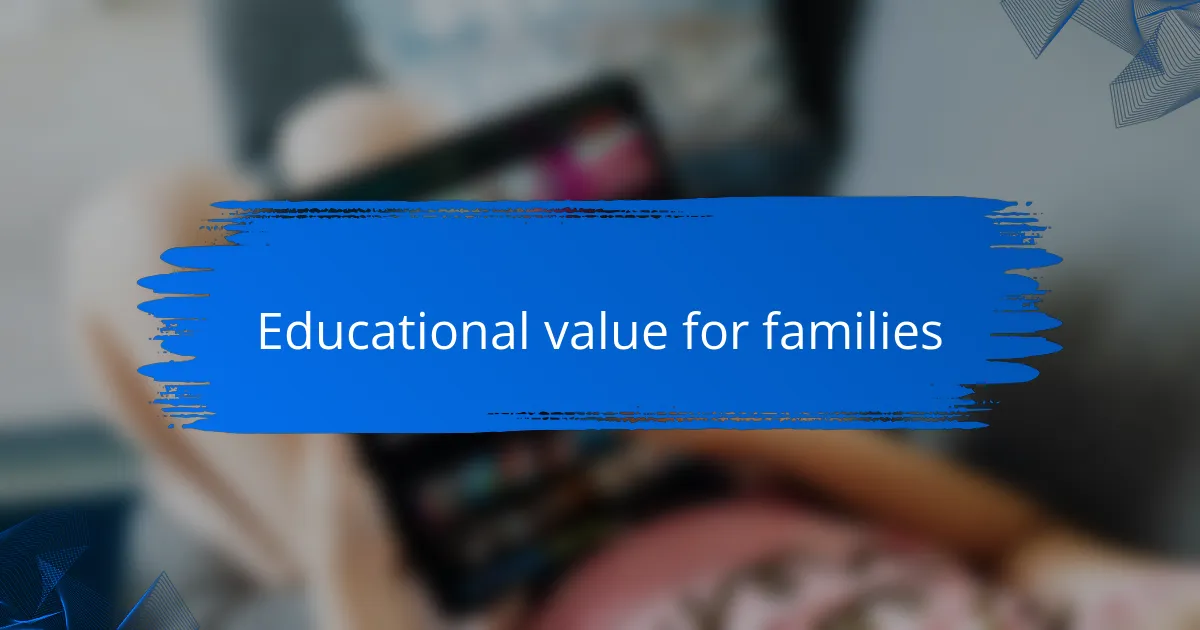
Educational value for families
What stands out to me about the Cleveland History Center is how naturally it fits into family learning. When I visited with my children, I noticed how the exhibits sparked questions they didn’t even know they had—almost like the museum invited their curiosity gently but persistently. Have you ever seen your kids light up when they connect a story or artifact to something they see in their own lives?
I also appreciate how the center balances historical facts with relatable stories, making the past feel accessible rather than overwhelming. From my perspective, this approach helps families of all ages digest information together without anyone feeling lost. It’s like weaving a shared narrative that everyone can participate in, no matter their age or background.
One memory that sticks with me is watching my son eagerly explain to his younger sister why certain inventions mattered to Cleveland’s growth. That moment made me realize the center doesn’t just teach history—it encourages kids to become storytellers themselves. Isn’t that the kind of education that stays with you long after you leave the museum walls?
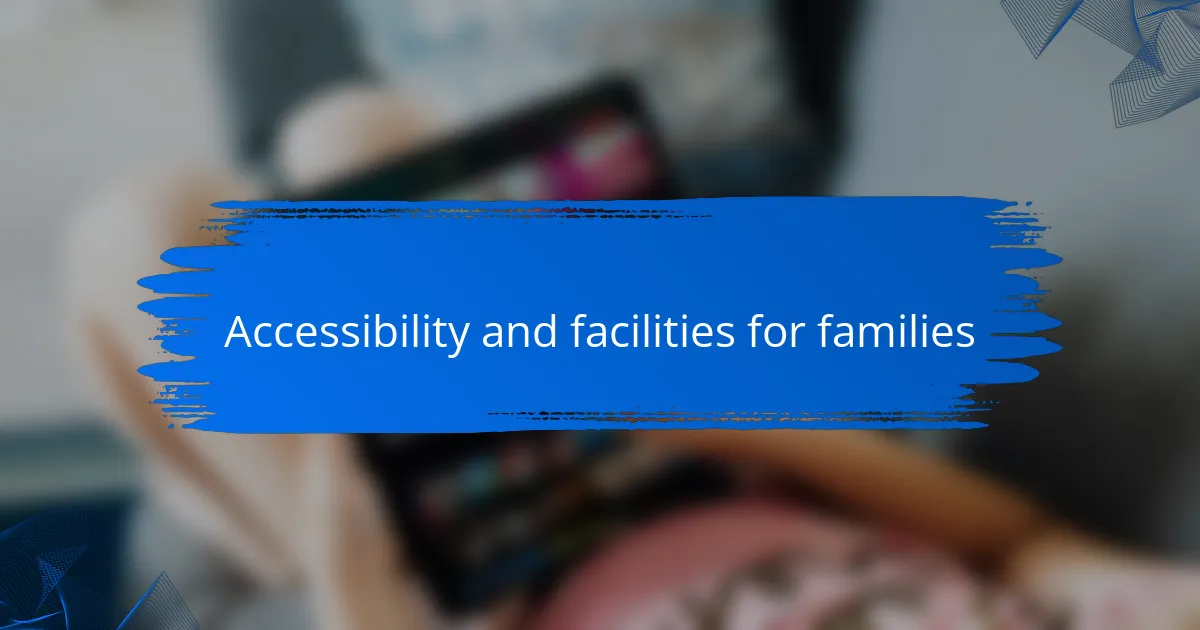
Accessibility and facilities for families
I’ve always appreciated how the Cleveland History Center makes accessibility a priority for families. Navigating the museum with a stroller or a little one in tow felt effortless, thanks to wide pathways and elevators that keep everyone included. Have you ever been to a museum where getting around feels like a challenge? This center definitely avoids that frustration.
What helped me relax even more during visits was the availability of family-friendly facilities—clean restrooms with changing tables and cozy nursing areas made it easier to focus on the exhibits instead of logistics. From my experience, these thoughtful touches transform a visit from stressful to smooth, especially with young children.
Another thing I noticed is how seating spots are placed just right throughout the center. When my kids needed a quick break or snack, we easily found a comfy bench nearby, making it simple to regroup and keep the day enjoyable. Isn’t that little consideration what makes a family outing truly pleasant?
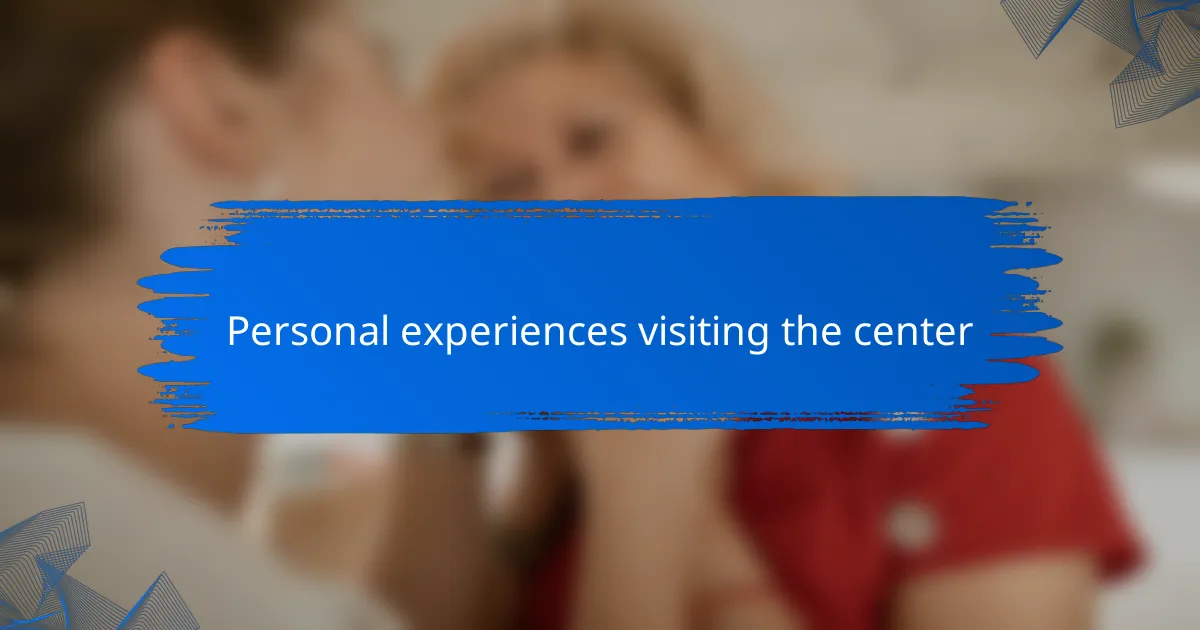
Personal experiences visiting the center
One visit that stands out vividly in my memory was when my kids and I stumbled upon an old toy exhibit. Watching my children’s wide eyes as they recognized toys their grandparents once played with was pure magic. Have you ever witnessed that spark of connection across generations? It’s moments like these that make the Cleveland History Center feel like a living bridge to the past.
On another visit, I remember feeling a quiet pride as my family explored an exhibit about Cleveland’s immigrant communities. Sharing those stories with my children made me think about my own roots and the journeys that shaped us. Isn’t it powerful when a simple museum visit invites such personal reflection and family conversations?
Sometimes, the best experiences happened unexpectedly—like when my youngest got deeply involved in a hands-on craft activity while the older ones debated historical facts nearby. I loved seeing them learn in their own ways but together, side by side. Don’t you think that kind of shared learning creates memories that last far beyond the museum walls?
